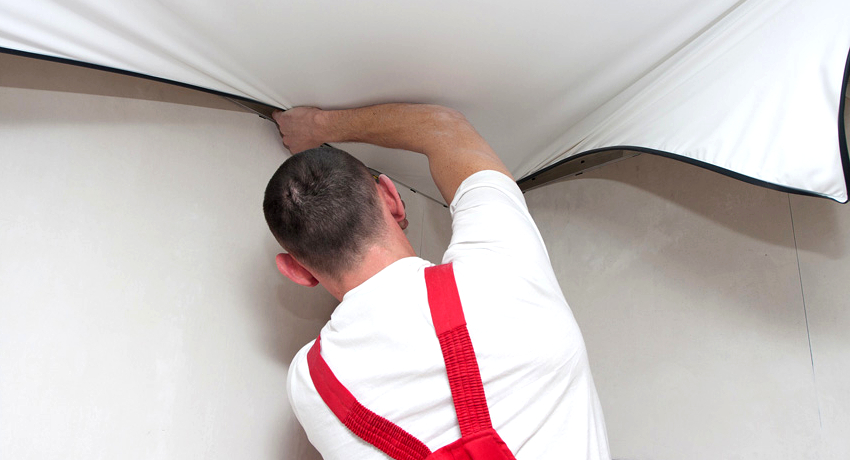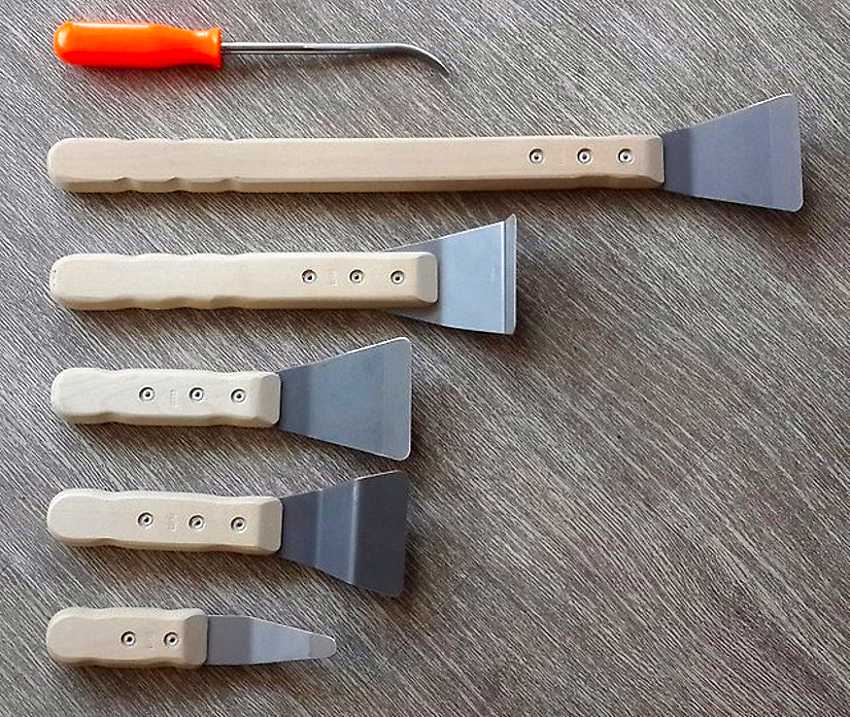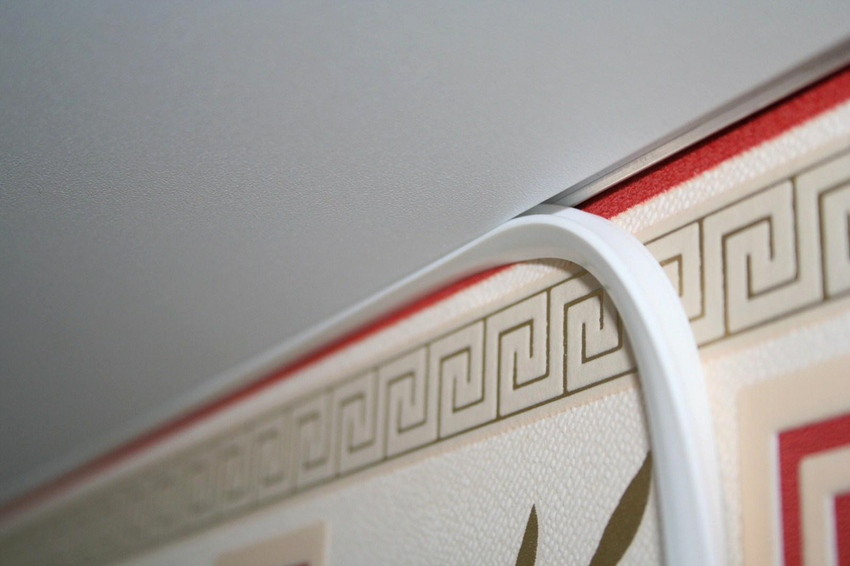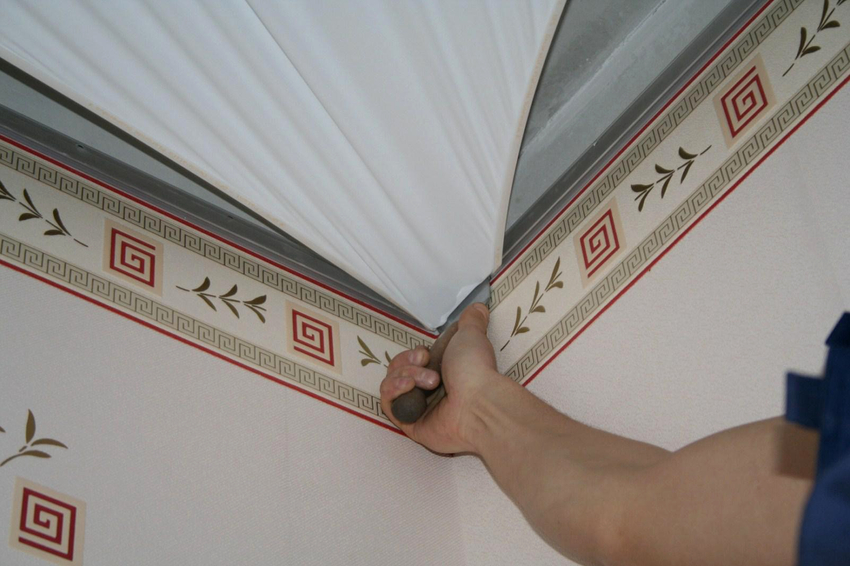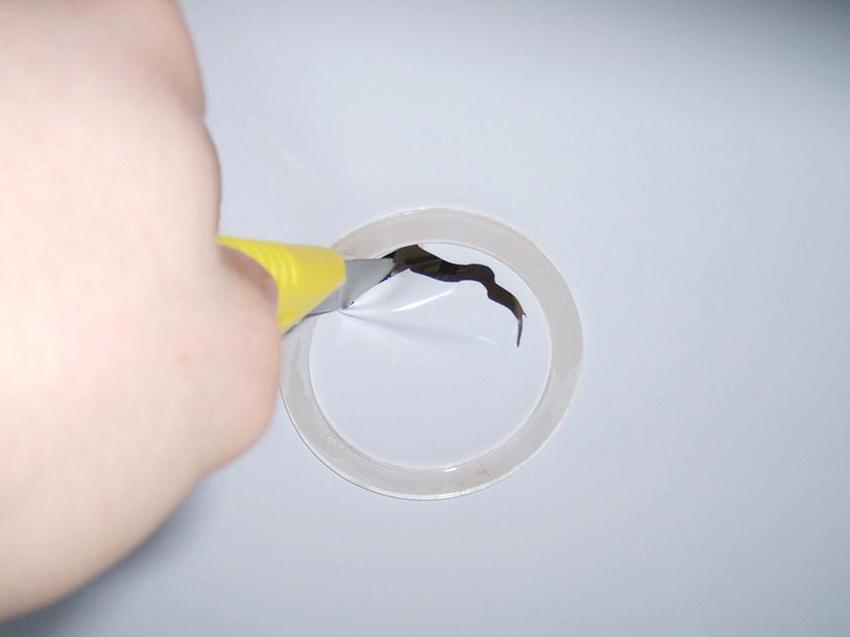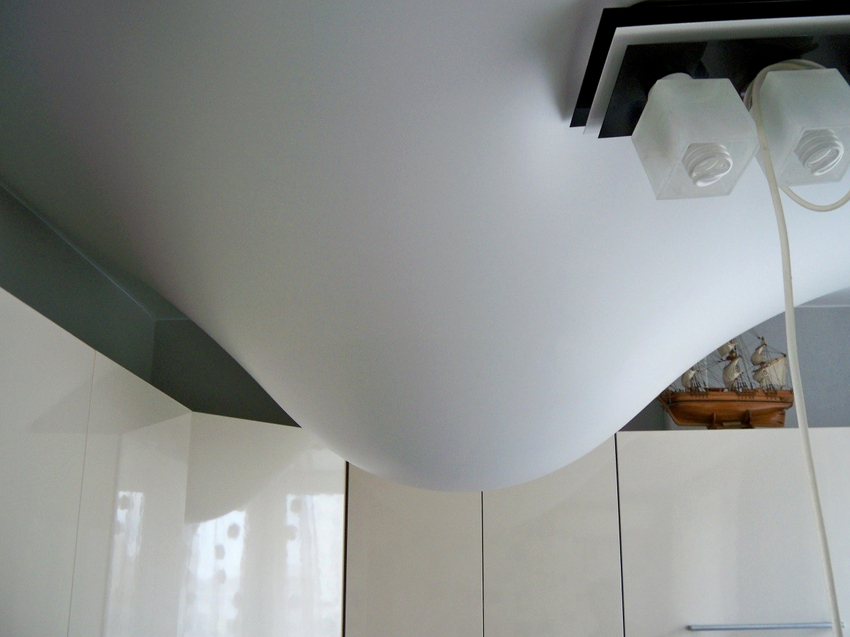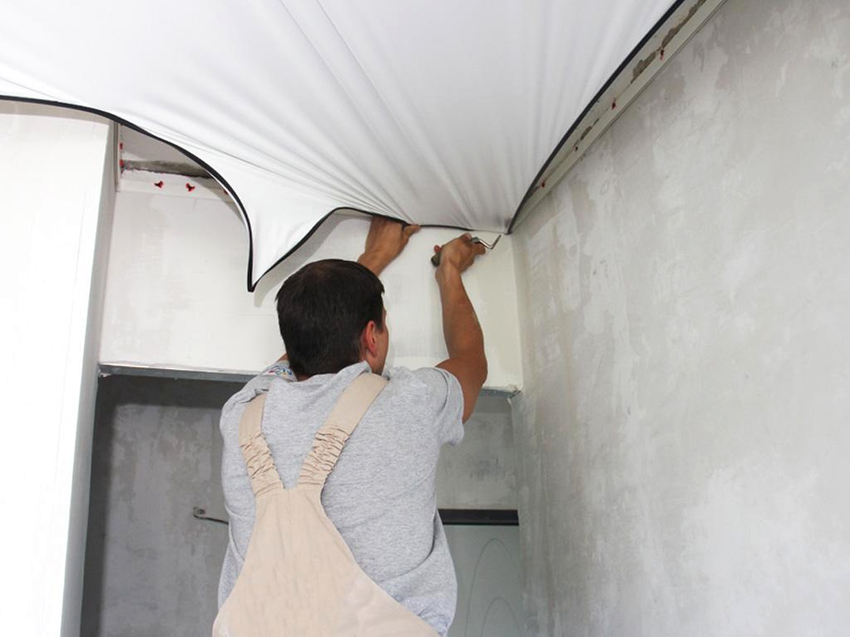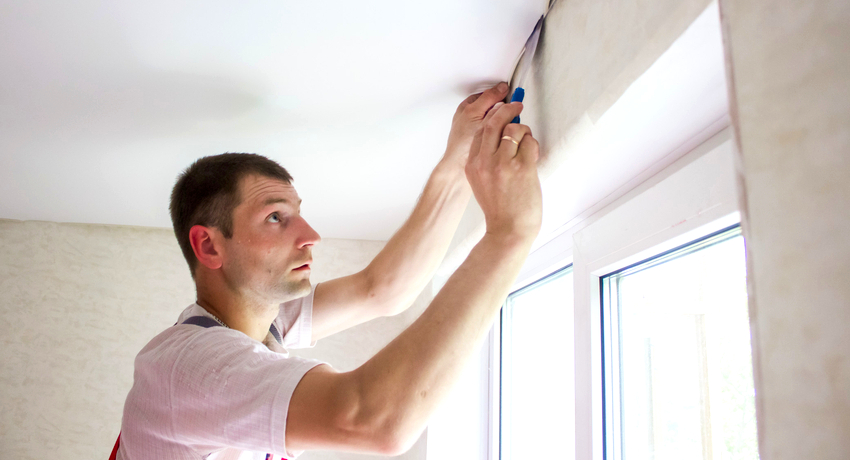Stretch ceiling is a unique opportunity to make the top covering of a room perfectly even, while choosing matte, gloss or fabric. Anything perfect visually is often vulnerable to gross interference, including mechanical stress. The ceiling sheet is no exception. Therefore, repairing a stretch ceiling is a serious and urgent problem.
Content [Hide]
- 1 Causes and consequences: what happens if you cut a stretch ceiling
- 2 How to remove stretch ceilings with your own hands: preparatory work
- 3 How to remove a stretch ceiling with your own hands: video materials
- 4 Stretch ceiling repair: small cut
- 5 Repair of stretch ceilings after a cut: elimination of significant defects
- 6 How to repair a stretch ceiling in case of sagging
- 7 Repair of stretch ceilings: prices for various types of work
- 8 Stretch ceiling repair: how to do without it
Causes and consequences: what happens if you cut a stretch ceiling
When renovating an apartment, many people prefer stretch ceilings. They are installed quickly (within 2-4 hours), their cost is relatively low, they have a high aesthetic appearance of the finished structure in all cases, since even the slightest level errors will simply not allow installation.
All of the above advantages are often overshadowed by problems associated with the operational characteristics of the canvas: it is thin and unstable to mechanical stress. The main reasons that result in damage to the stretch ceiling can be the following:
- inaccurate movements while hanging lamps;
- careless installation of furniture, as a result of which the integrity of the surface is often violated;
- children's games, as a result of which objects with corners or sharp tips may fall into the canvas.
Another reason for damage to the canvas can be the ignorance of the would-be craftsmen performing the repairs, which first - a stretch ceiling or wallpaper? If the wallpaper is glued after installing the canvas, it is almost impossible not to harm the latter. The danger of spoiling the synthetic fabric also exists when lighting devices of significant power are located close to the coating.
A cut is most often the result of mechanical stress. To choose a repair method, you need to consider the size of the damage. From the influence of high temperatures, the canvas warps or a hole appears on it.
How to remove stretch ceilings with your own hands: preparatory work
During the operation of stretch ceilings, their aesthetics and even functionality may be impaired for other reasons:
- the welded seams of the fabric of the structure parted;
- there was a gap between the wall and the profile;
- repair of the stretch ceiling wiring;
- a ceiling cornice is installed.
To eliminate all of the above defects and solve problems, it is required to dismantle the stretch ceiling. The ability to perform this activity depends on two reasons:
- types of canvas (fabric or polyvinyl chloride film);
- mounting method.
As for the material, it must be taken into account that the film has the ability to expand, become more elastic when heated, therefore its re-installation is quite acceptable. The fabric is less plastic, after tension, all excess is cut off, that is, there is absolutely no margin left. You can reuse the fabric, but in a different room, where the ceiling is smaller.
To understand how to dismantle a stretch ceiling with your own hands, you need not only to know which method of fastening was used, but also to follow the sequence of actions when performing the work. It is also important to have all the necessary tools and accessories available.
Useful advice! When choosing a stretch ceiling and a baguette for fixing it, be sure to ask whether it will be possible to remove and reinstall the canvas. The likelihood of such a need is very high even if all installation and operation requirements are met.
Dismantling a stretch ceiling: an algorithm of actions
First of all, you need to familiarize yourself with the sequence of work when removing the stretch ceiling.
It is recommended to start dismantling with the removal of the soft decorative insert, which is laid between the ceiling structure and the wall. It is necessary to find the joint of the two ends, which is usually in the corner part, and carefully pull out the insert.
Then you need to remove the canvas itself directly.
Useful advice! The material should be warmed up before removing the coating. This will avoid damage during dismantling.
In rectangular and square rooms, it is better to start from the corner. With the help of a stepladder, you need to examine the perimeter, find the end of the edge, which you can grab and pull. In rooms with a multi-level or complex ceiling, dismantling can be started from any point.
Self-taught specialists, when removing stretch ceilings for repair with their own hands, use a tool that is in every home workshop - pliers. But their edges are quite sharp, there are corners that can easily damage the canvas. Therefore, the solution to the problem can be rounding off sharp parts by filing and sharpening corners. After such processing, the tool becomes safe, which greatly simplifies its use.
How to remove a stretch ceiling with your own hands: video materials
Video can be of great help in mastering the process of removing a stretch ceiling. There are quite a lot of videos posted on the Internet. After watching the first video, you can get detailed information on what tools are convenient to remove the tension web. Do-it-yourself manufacturing methods are also proposed. The video "Stretch ceiling repair" clearly demonstrates the use of tools for removing the canvas.
The method suggested in the second video is of particular interest. Almost all PVC films are attached using a harpoon method. The author suggests how to remove the ceiling correctly so that the harpoon is not damaged.He cautions against trying to pull the web, suggesting a different extraction option.
Some videos demonstrate the dismantling of a gapless stretch ceiling. The harpoon system in such constructions has a specific lock, which should be felt. A prerequisite for performing work in such situations is heating the area from where the film will be removed. When dismantling for the subsequent repair of a stretch ceiling with your own hands, it is not necessary to use a heat gun, it is quite possible to do with a construction hairdryer.
Before adopting the dismantling tips offered in the video, it is worth watching several videos, comparing what you see. Some authors only demonstrate the removal process, where the condition of the removed material is irrelevant. If you plan to reuse the canvas, these recommendations will not work.
How to remove a stretch ceiling and put it back with your own hands
How to remove a stretch ceiling canvas with your own hands is described in sufficient detail above. In this section, we will focus specifically on the installation, that is, on the return to the place of the main part of the structure.
Important! It is possible to reuse the canvas of the stretch ceiling only if the harpoon mounting system was used.
If the removal was carried out to repair the canvas itself, reinstallation does not imply any action with the baguettes. In the event that the repair work only affects the walls and the moldings are at least partially removed, it is necessary to re-install the fasteners around the entire perimeter with strict level control.
Before stretching stretch ceilings with your own hands, the film must be warmed up. If part of the canvas was removed, a construction hair dryer will be enough. With complete removal and re-tightening, a heat gun is indispensable. It should be noted that removing the film yourself is much easier than installing it. Stretching requires experience, or at least self-confidence. All the same steps will be required as for the initial installation.

With complete removal of the canvas and its secondary installation, you cannot do without a heat gun
Before stretching the canvas, it is necessary to remove dust or even wash it with a solution of warm soapy water, wipe it with a napkin. One will not be able to perform a reinstallation (however, as well as the initial one). Fastening should start from the corners. The only difference between the secondary installation and the initial installation is that the canvas of the required size has already been cut.
Stretch ceiling repair: small cut
The most common damage to a stretch ceiling is precisely cuts. When eliminating defects, their size is important. If they do not exceed 2 cm, then it is quite possible to repair stretch ceilings after a cut with your own hands. To do this, you will need a universal connecting agent - tape. Despite the simplicity of its application, it is worth adhering to certain requirements:
- the tape must be transparent,
- the presence of fingerprints and even point inclusions of dust or other particles on the adhesive side is unacceptable:
- the piece of adhesive tape must have a straight cut;
- it must be applied to the closed edges of the cut;
- the applied adhesive tape should protrude 0.5-0.7 cm beyond the line of damage.
To close the edges of the cut, it is better to invite an assistant who, with light movements, will "feed" the canvas from both sides at a distance of 7-10 cm from the injury site. Fulfillment of the above conditions will eliminate the defect, while maintaining the aesthetics of the ceiling covering.
It is recommended to watch the video "Stretch ceiling repair". The cut is closed by specialists in three ways:
- applying a patch;
- installation of an additional spotlight;
- mounting the diffuser.
You can use one of the above options to eliminate the ceiling defect, especially since the last two also create additional comfort in the room - they enhance lighting and improve ventilation.
Repair of stretch ceilings after a cut: elimination of significant defects
Several other technologies are used to eliminate a large cut (up to 15 cm).
Important! If the size of the defect exceeds 15 cm, it will not be possible to eliminate it while maintaining aesthetics; a complete replacement of the canvas will be required.
It should also be noted that when a cut appears, it is immediately necessary to fix its edges using masking tape. Otherwise, the cut will grow, spread out.
When doing a stretch ceiling repair with your own hands, a cut of significant size can be eliminated in several ways.
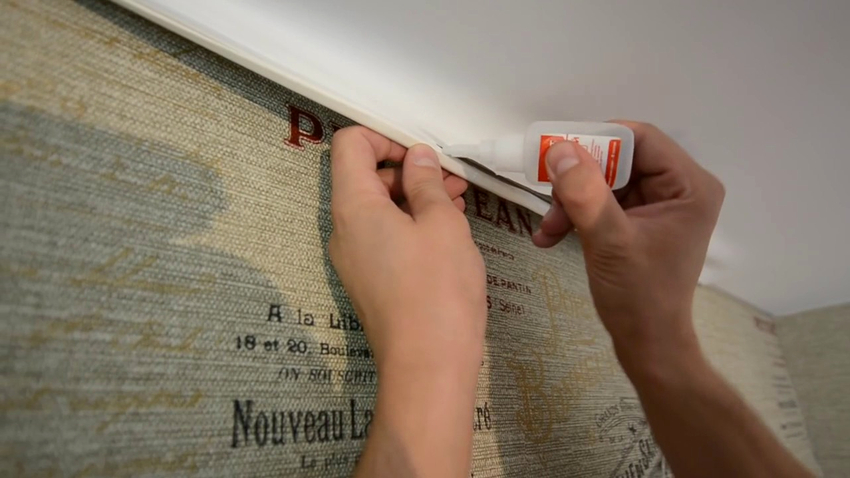
If the cut size exceeds 15 cm, it will not be possible to eliminate the defect while maintaining aesthetics.
Applying a patch from the front. Usually the applique is made from the same material as the canvas. The adhesive is applied to the patch. It is necessary to ensure that its excess does not protrude beyond the edges, otherwise this will greatly spoil the appearance of the ceiling. After application, the pressure should also be performed carefully - evenly, without chaotic pressing, otherwise wrinkles may appear on the surface.
Gluing from the inside out. First, the canvas must be dismantled. Depending on the location of the defect, this can be either the removal of a part of the coating or almost complete dismantling (if the damage is in the center). The edges of the cut must be closed and fixed with a patch. If done carefully, this repair method is most effective.
Additional pulling. If the cut is not far from the baguette (less than 10 cm), the canvas can be dismantled along the corresponding perimeter strip, heated, cut off the defect and refilled, if necessary, adjusting the tension of other surface areas.
The question of which glue to glue the stretch ceiling usually does not cause problems. It can be any universal or special composition with quick drying: Cosmofen, Somafix, Contact, etc.
How to repair a stretch ceiling in case of sagging
The sagging of the stretch ceiling spoils its aesthetics no less than the appearance of defects. It can arise for several reasons:
- Low-quality installation of the structure. The canvas is not stretched enough, it sags under its own weight.
- Damage to the base ceiling coating. Pieces of putty or other finishing material fell on the stretch fabric.
- The ventilation is incorrect. Air currents cause the ceiling film to swell.
All of the above situations require ceiling repair. You can do it with your own hands only under certain circumstances.
Related article:
Stretch ceiling with illumination: varieties of structures and lamps
Shape, color and surface decoration. Varieties of construction. Stretch ceiling lighting devices.
It is not difficult to eliminate the consequences of unprofessional installation on your own, provided that the type of fastening will allow partially or completely (depending on the specific case) to remove the coating. It is warmed up and fixed again.
When particles of the base ceiling collapse onto the canvas, complete dismantling is most often necessary. The canvas is removed, cleared of debris and returned to its place.
Sagging due to ventilation installation errors requires the correct direction of the air flow. Here it is worth using the advice of professionals or entrusting the work to specialists. Dismantling may require both complete and partial (depending on the location of the ventilation equipment).
Repairing a stretch ceiling after flooding
What to do if the stretch ceiling is flooded? First of all, don't panic. You need to do the following:
- turn off electricity throughout the house;
- call the appropriate service if there is a warranty for the design.
What not to do:
- Afraid that the canvas will tear. PVC film for ceiling coverings withstands the weight of 100 m3 per 1 m².
- Pierce the bubble formed in the center. First, water will flood the room, damaging furniture and flooring; secondly, the canvas will receive damage that will need to be repaired.
This is followed by the repair of the stretch ceiling after the flood. If a team of service specialists does this, most likely, no serious action will be needed at all: they will pump out the water, the canvas will be restored.
When fixing the problem yourself, first of all, you need to carefully drain the water. To do this, you will need to partially dismantle the ceiling so that the liquid can drain away and the canvas remains intact. It is worth using all sorts of devices in the form of improvised gutters and channels.
If, after removing water, the canvas has not restored its original appearance, you can use a construction or household hairdryer. It will tighten from warming up.
Important! It is practically impossible to carry out repair of stretch ceilings made of fabric after the bay - they must be replaced.
Repair of fabric stretch ceilings: the most acceptable ways
Stretch fabric ceilings significantly complement the interior, make the premises cozy and comfortable. With regard to performance, they have significant differences from PVC films. And above all, this is a method of fastening. For fabric structures, bead is used. To repair a hole in a stretch ceiling made of fabric, the patch will have to be applied to the front part.
Many experts do not undertake the dismantling of such a ceiling at all, since it is very difficult to remove the glazing beads without damaging the canvas. You only have to work on the outside. To do this, take the pieces of fabric remaining after installation, cut out a fragment of the pattern corresponding to the damaged one, apply glue and apply to the surface. In no case should you press and rub it intensively.
If there are no residues, you can use a plain fabric of a similar texture, on which, after gluing and drying, you need to perform the necessary pattern. It is worth noting that even with a high level of artistic professionalism, it will not be possible to accurately convey the shade of color. Therefore, it is very difficult to achieve perfect results.
Before gluing the stretch ceiling with your own hands, as an option, you can sketch a pattern or ornament on a piece of fabric and close the damaged section of the canvas.
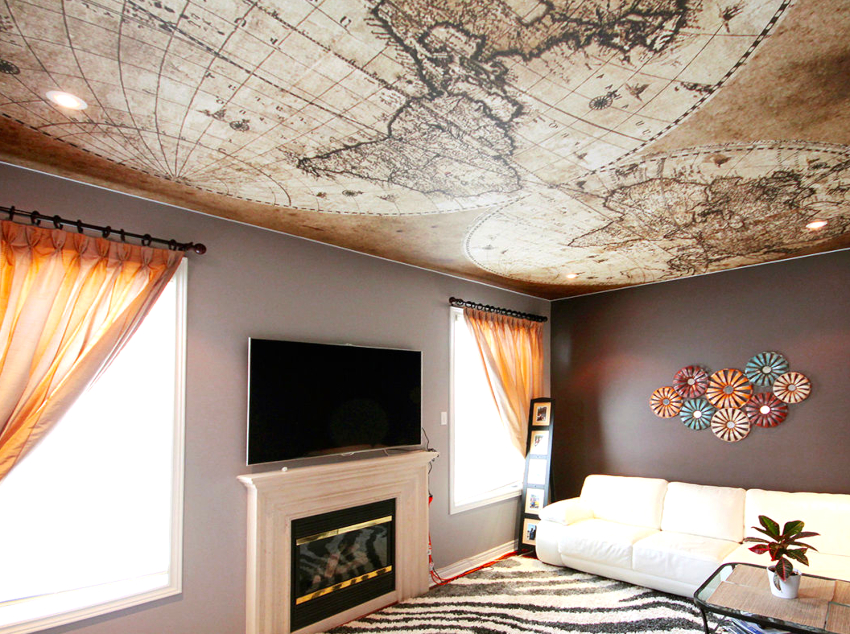
Repair of fabric stretch ceilings is a very difficult process, many specialists do not even undertake to perform it
If you still succeed in dismantling the ceiling, the patch should be applied to the connected parts of the cut from the wrong side. On a colored canvas, such repairs are almost invisible. Holes are better to close on the front.
Repair of stretch ceilings: prices for various types of work
If there is a complete misunderstanding as to how and how to glue the stretch ceiling in case of damage, it is better to seek help from specialists. When the installation is carried out by employees of legal organizations, a guarantee is issued for the structure. If the damage is the result of inaccurate actions of the household, specialists will not eliminate the defect for free, but they will do the work as responsibly and accurately as possible, since they are dealing with their client.
Independent unprofessional actions not only will not save money, but also cause even more damage to the structure.The prices for the repair of stretch ceilings are quite high. The cost of draining water during flooding is at least 3000 rubles, and the price depends on the volume of water.
Elimination of small cuts costs the same money - 3000 rubles. If the process is complicated by dismantling and surface restoration, the cost increases several times.
If we talk about a more specific price, it is worth pointing out that replacing the canvas will cost 400-500 rubles per m².
Useful advice! Before you repair the ceiling (on your own or with the assistance of specialists), it will be very useful to read the reviews on the Internet. Do-it-yourself repairs will work, but will the result be satisfactory ...
Stretch ceiling repair: how to do without it
To avoid the need to repair a stretch ceiling, certain conditions must be met:

Careful handling of the stretch ceiling both during installation and during operation will avoid its repair
- Compliance with the stages of repair. Stretch ceilings must be installed last, when the walls, floors, door blocks, window frames are ready. Any imperfection will require the use of tools, therefore, there will be a risk of damage to the canvas.
- Furnishing a room with a stretch ceiling should be done with utmost care. It is better if a person who controls the work of the movers is involved in the process.
- Before installing the tensioning structure, it is imperative to inspect the condition of the base ceiling so that during operation, pieces of the ceiling do not fly onto the canvas.
- It is better to use LED lamps as lighting devices. They do not lead to heating and melting of the PVC ceiling film.
- When installing a stretch ceiling in a kitchen or bathroom, you should firmly seal the cracks in the upper ceiling with moisture-resistant material. This will to a certain extent protect against water ingress on the canvas when flooded by neighbors.
- Dismantling a stretch ceiling with your own hands should be done only if you have a complete understanding of the specifics of the work.
A stretch ceiling requires careful handling both during installation and during operation. If problems do arise, it is imperative to know what to do in such situations. Knowing the information, you can determine a more reliable way to eliminate the defects that have appeared.
